San Bernardino officials will strip fruit from ALL trees across 2,000 homes in the county to eradicate invasive Oriental fruit fly
California officials are launching a massive fruit removal effort from trees to curb the state’s widespread oriental fruit fly infestation.
The California Department of Food and Agriculture plans to remove all fruits hanging from trees from 2,000 homes in the Redlands area of San Bernardino County.
Workers will go door to door from now through February removing fruit from all “citrus trees and other fruit-producing plants.” The trees will “remain in place,” according to the CDFA.
“All host fruits for the oriental fruit fly – both citrus and some other fruits – will be removed from the plots, while the trees will remain in place,” the statement said. read.
It is unclear what economic damage the plague will cause in the state this year.
Officials have asked residents and business owners not to pick fruit from trees, move produce from their property or compost it.
The California Department of Food and Agriculture plans to remove all fruits hanging from trees from 2,000 homes in the Redlands area of San Bernardino County.
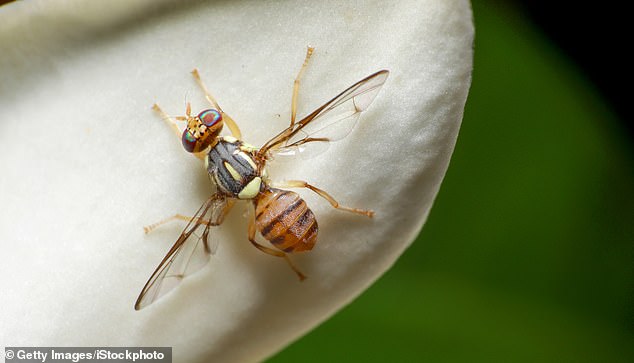
The oriental fruit fly, which is yellow and black and resembles a small bee, is known to attack more than 400 types of fruits and vegetables, including apricots, cherries, citrus fruits, figs, peaches, pears, plums and tomatoes.
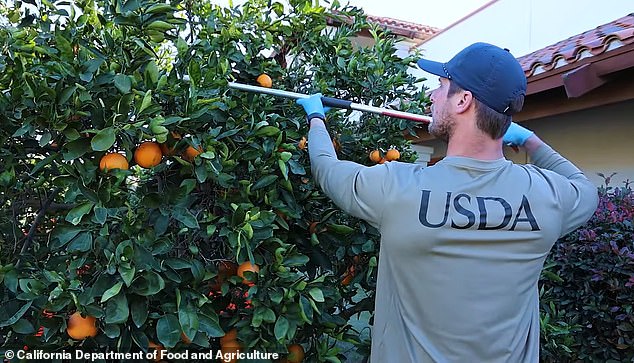
Officials have asked residents and business owners not to pick fruit from trees, move produce from their property or compost it
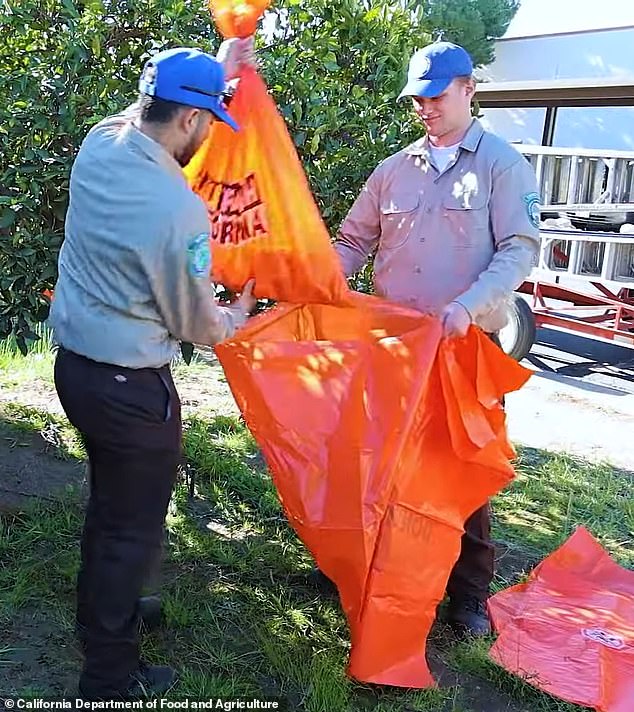
The agency said if dropped or unconsumed fruit needs to be thrown away, residents should double-bag it and place it in a garbage bin rather than in green waste bins or other organic waste containers.
The agency said if dropped or unconsumed fruit needs to be thrown away, residents should double-bag it and place it in a garbage bin rather than in green waste bins or other organic waste containers.
Residents in care areas will receive notification 48 hours before the start of the process.
The trial will take place on properties between north and south of Interstate 10, according to a map released by officials.
The map shows the northern boundary as East Highland Avenue, the western boundary as the intersection of Garden and Elizabeth Street, the eastern boundary as Alta Vista Drive, and the southern boundary as Silver Leaf Court.
The oriental fruit fly, which is yellow and black and resembles a small bee, is known to attack more than 400 types of fruits and vegetables, including apricots, cherries, citrus fruits, figs, peaches, pears, plums and tomatoes.
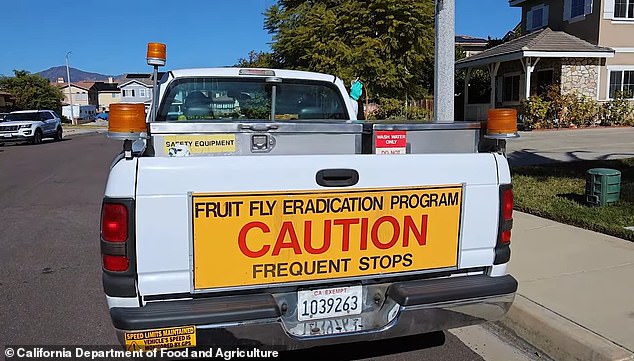
Workers will go door to door from now through February removing fruit from all “citrus trees and other fruit-producing plants.”
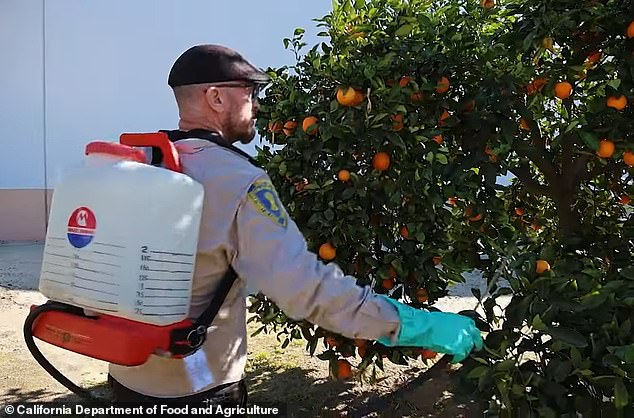
Residents in problem areas will receive notice 48 hours before fruit removal, with work crews arriving after the designated time interval has passed
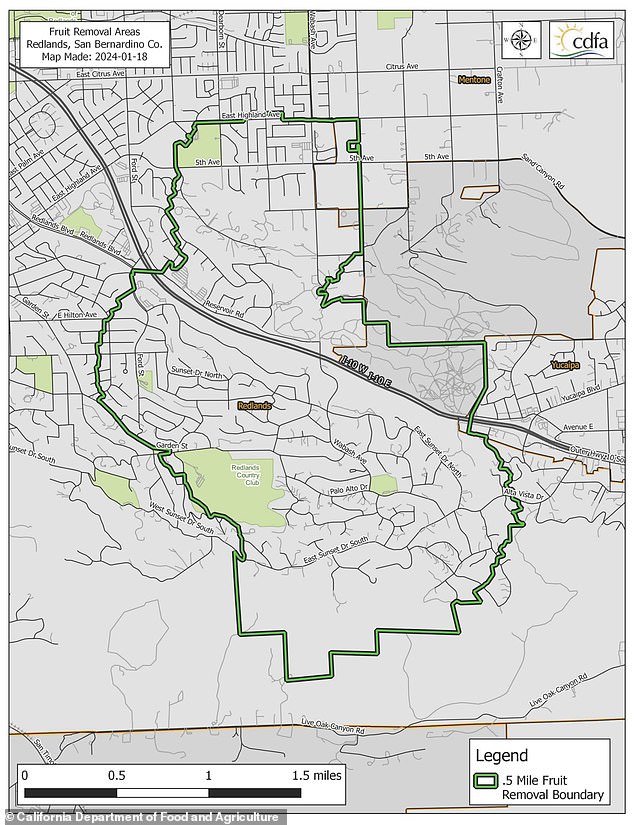
The trial will take place on properties between north and south of Interstate 10, according to a map released by officials
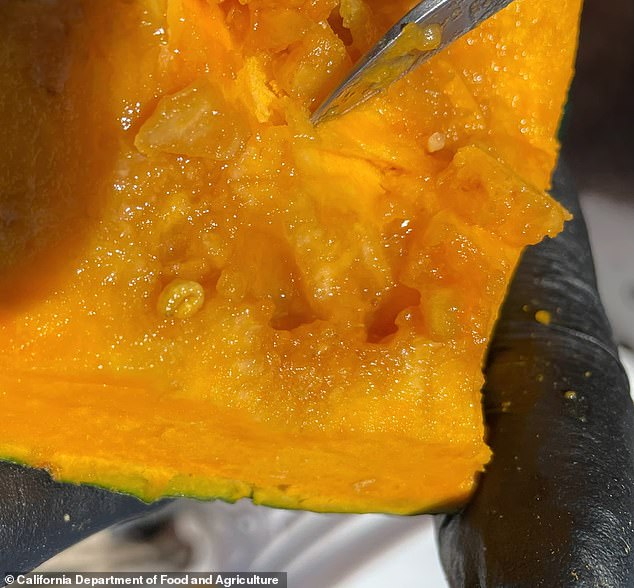
Female flies lay eggs in groups of three to thirty under the skin of the host fruits. The maggots that develop from the larvae then tunnel through the fruit, feeding on the pulp, shedding their skin twice and emerging through the exit holes after about 10 days.
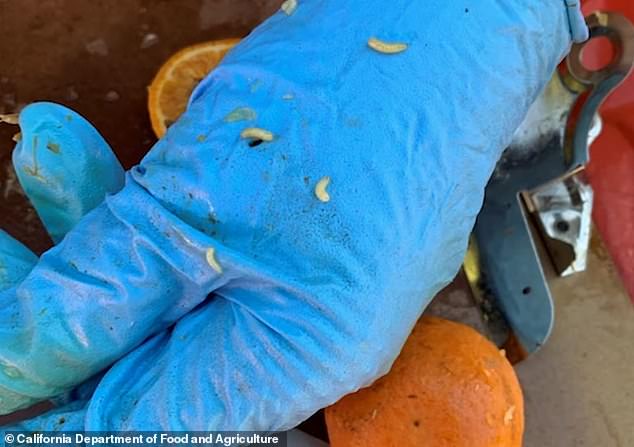
The value of California crops threatened by the fruit fly in 2020 was $19.3 billion
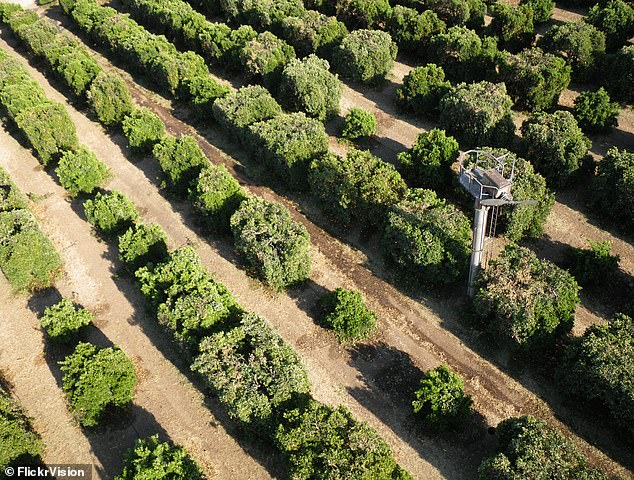
According to the Department of State website, California is the largest producer and exporter of agriculture, dairy products, fruits and nuts
Female flies lay eggs in groups of three to thirty under the skin of the host fruits. The maggots that develop from the larvae then tunnel through the fruit, feeding on the pulp, shedding their skin twice and emerging through the exit holes after about 10 days.
The larvae then fall out of the fruit and burrow two to three centimeters into the soil to pupate. Adults emerge from this puparia within 10 to 12 days.
With this plan, the CDFA, the U.S. Department of Agriculture and the local agricultural commissioner’s office aim to break the life cycle of the invasive fly.
If left unchecked, the insect could become permanently established in the state and cause billions of dollars in losses annually, which officials say would have a significant impact on California’s food supply.
The value of California crops threatened by the fruit fly in 2020 was $19.3 billion.
According to the Ministry of Foreign Affairs websiteCalifornia is the largest producer and exporter of agriculture, dairy products, fruits and nuts.
More than a third of the country’s vegetables and two-thirds of the country’s fruits and nuts are grown in the state.
